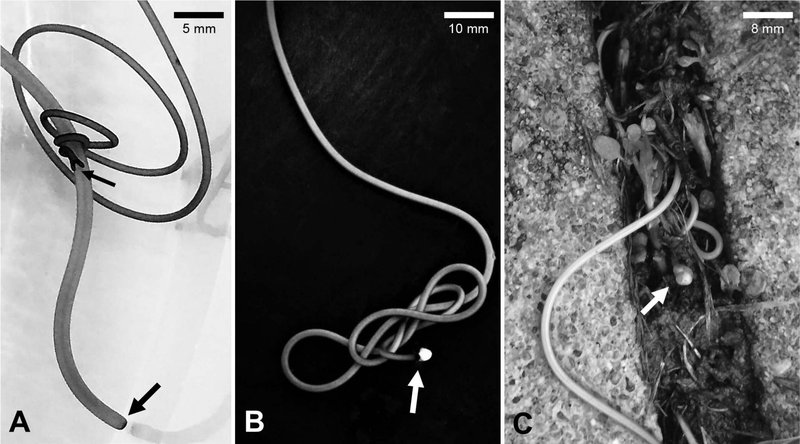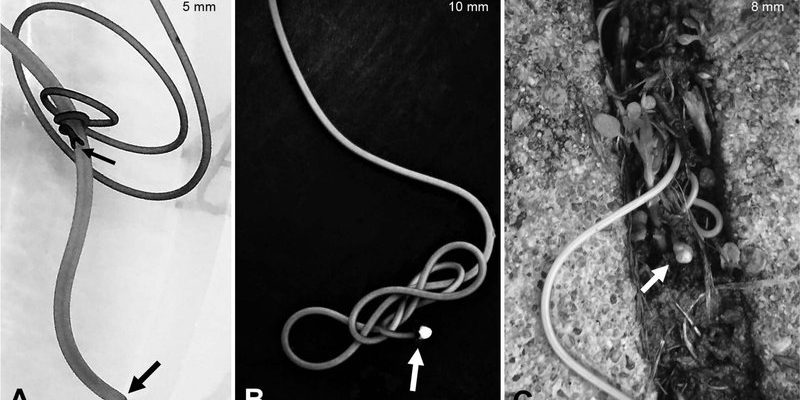
Imagine you’re watching a scene from a nature documentary. The camera zooms in on a slender, moving worm, and the narrator starts explaining its life cycle. Before you know it, you’re mesmerized. But then, as you look around in the field, the various creatures move in similar ways, and suddenly, you’re not so sure which one is the nematomorph you were hoping to find. It can feel a bit like a game of hide-and-seek, where the players are all related yet so different. Let’s dive into what makes these critters both fascinating and frustrating to identify.
What Are Nematomorphs?
To start, let’s get a good grasp of what nematomorphs are. These creatures belong to the phylum Nematomorpha, which might sound pretty technical, but to keep it simple, they’re often called horsehair worms due to their long, thin bodies that resemble strands of hair. Adult nematomorphs are usually found in moist environments, especially near water sources. They have fascinating life cycles, often parasitizing insects before emerging as adults.
Interestingly, when you spot them in the wild, you might not even realize it’s a nematomorph. Why? Because when they’re not wriggling around in water, they blend seamlessly into their surroundings. Their color can range from brown to green, and they often have a transparent quality that makes them hard to distinguish from other aquatic life.
Here’s the thing: these guys can grow quite long—some even reaching lengths of several feet! But in their juvenile stages, which are often the ones you’ll see, they’re much harder to spot because they’re smaller and tangled up in their hosts. This makes identification particularly challenging.
Common Look-Alikes
When you’re out looking for nematomorphs, you may come across some imposters. Other species, like certain types of worms or even larvae, can mimic their appearance. This can be super confusing when you’re trying to make a positive identification.
For instance, gordian worms (another member of the same broader family) can look strikingly similar to nematomorphs. Both are long and thin, making it easy to mistake one for the other, especially at a distance. You might be wondering what differentiates them. Generally, gordian worms are more coiled and often have a different movement pattern when they swim through water, appearing more like they’re tangled up than gracefully swimming.
Another common look-alike is the maggot. While it’s not a perfect match, young maggots can have a similar cylindrical shape. However, they usually have a more pronounced segmental structure, whereas nematomorphs tend to appear smoother. Observing the environment where you find these creatures can help; nematomorphs thrive in freshwater, while maggots are often found in decomposing matter.
Behavioral Traits That Help with Identification
Behavior can be your best friend when it comes to identifying nematomorphs. They have unique movement patterns that set them apart from other worms. When swimming, nematomorphs often undulate their entire bodies, creating a snake-like motion. This can be quite different from the wriggling motion you might see in other types of worms.
Another interesting behavior is their habit of emerging from their hosts. Adult nematomorphs seek water to reproduce, and they often manipulate their host’s behavior—like a puppet master pulling strings—to make them jump into water. So, if you notice a sudden, frantic movement in an insect or another host, it might just be that a nematomorph is about to make its grand exit!
Also, watch for their response to changes in the environment. When threatened or disturbed, nematomorphs can either dive deeper into the substrate or swim erratically, almost like they’re trying to evade detection. Recognizing these behaviors can help you confidently identify them in the field.
Habitat Considerations
Finding nematomorphs isn’t just a matter of looking closely—it’s also about knowing where to look. They prefer damp, freshwater environments, so exploring ponds, marshes, or even damp forest floors can increase your chances. Here’s the catch: depending on the season and local climate, their visibility can change dramatically.
In spring and early summer, when many insects are active, you might find more nematomorphs emerging from their hosts. In contrast, during dry spells or colder months, their activity decreases. If you’re eager to spot them, try heading out during warm, humid days after a rain. This is when nematomorphs are most likely to be seen wriggling out in the open.
Consider checking under rocks or logs near water—these are prime spots for nematomorphs to rest or hide. If you do find one, be sure to take in its environment. You might spot signs of other wildlife, like insects, that these fascinating creatures interact with.
Tools for Spotting Nematomorphs
You might be wondering, “What can I bring along to help me identify nematomorphs more easily?” Well, keeping a few helpful tools in your nature kit can make all the difference.
– Field Guide: A good field guide that includes nematomorphs can help you understand what to look for. These guides often include images and helpful descriptions that can boost your confidence in making identifications.
– Magnifying Glass: It’s not just for the detectives in movies! A magnifying glass can help you observe the finer details of these creatures, especially their body texture and movement.
– Notebook: Jotting down notes or sketching what you see can help you remember key characteristics later. This becomes especially useful when comparing with field guides.
– Camera: Taking photos can assist you in documenting your findings and analyzing them later. Plus, it’s a great way to track your progress as you become more skilled in spotting these insects.
Bringing along some of these tools will not only make your experience richer but also help in identifying nematomorphs confidently.
Considering Conservation
Lastly, let’s not forget about the importance of conservation when it comes to observing nematomorphs and other wildlife. It can be easy to get caught up in the excitement of finding a new species, but remember to respect their habitat. Make sure to leave everything as you found it, avoiding disturbing their environment. Not only is this good practice, but it helps protect these unique creatures for future generations.
Here’s a tip: When observing, try to keep your distance as much as possible. You want to enjoy the experience and learn, not inadvertently harm the creatures or their habitat. If you’re using any gear, ensure it’s clean to avoid introducing any non-native species or contaminants.
In conclusion, spotting and identifying nematomorphs in the field can be tricky, but it’s also incredibly rewarding. By understanding their unique traits, recognizing their behaviors, and practicing good observation techniques, you’ll be on your way to becoming a confident nematomorph identifier. So grab your gear, head out into nature, and embrace the thrill of the hunt!

